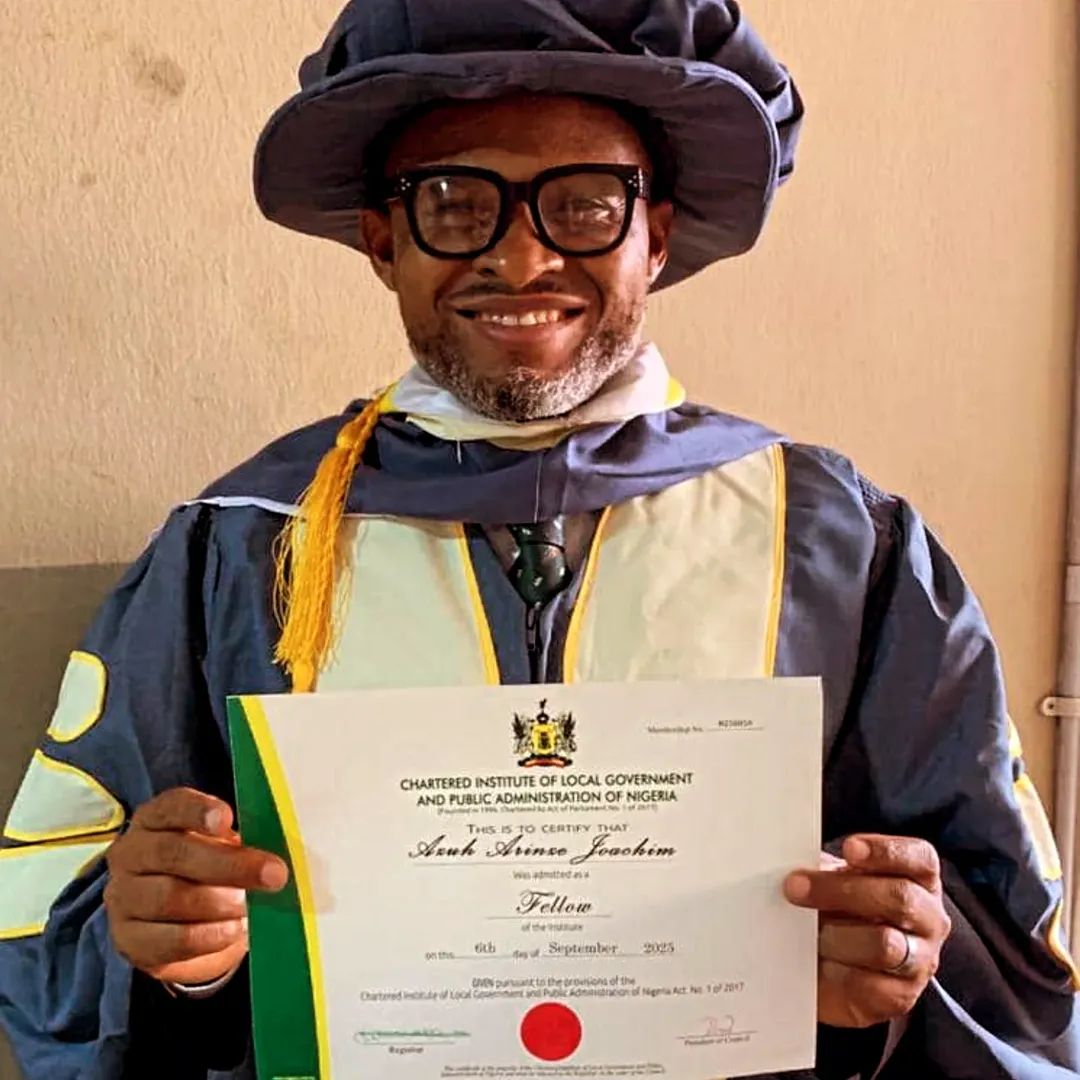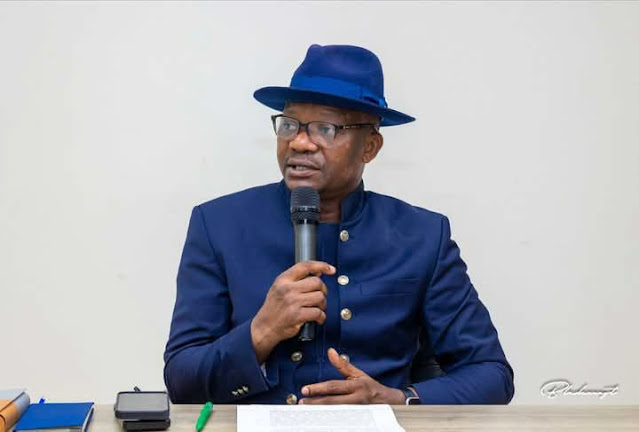On September 6, 2025, Aryna Sabalenka stood atop the pinnacle of women’s tennis, successfully defending her US Open title with a commanding 6-4, 6-3 victory over American Madison Anisimova in the women’s singles final at Flushing Meadows, New York. The Arthur Ashe Stadium, filled to capacity with a passionate crowd, bore witness to Sabalenka’s relentless power, mental fortitude, and tactical evolution as she secured her third Grand Slam singles title and cemented her status as one of the sport’s elite. The Belarusian’s journey to retain the US Open crown was a testament to her growth as a player and person, overcoming a formidable field and a resurgent Anisimova to etch her name deeper into tennis history.
The 2025 US Open women’s final was more than a championship match; it was a clash of narratives, styles, and generations. Sabalenka, the reigning champion and World No. 2, brought her signature blend of raw power and newfound composure to the court, while Anisimova, a 24-year-old American making a remarkable comeback, represented the dreams of a nation yearning for a homegrown champion. The victory capped a remarkable tournament for Sabalenka, who navigated a treacherous draw with poise and precision, silencing doubters and solidifying her place among the WTA’s elite. This article delves into Sabalenka’s path to the 2025 US Open title, exploring her matches, her evolution, the significance of her triumph, and the broader context of women’s tennis in a dynamic and competitive era.
The Context: Women’s Tennis in 2025
The 2025 US Open arrived at a pivotal moment in women’s tennis. The sport was in the midst of a golden era, characterized by fierce competition and a new generation of stars. With legends like Serena Williams retired and players like Ashleigh Barty having stepped away, the WTA Tour had seen the rise of a trio of dominant forces: Iga Swiatek, Coco Gauff, and Aryna Sabalenka. These players, each with multiple Grand Slam titles, had redefined the landscape, blending power, athleticism, and mental toughness. Alongside them, a host of young talents and resurgent veterans—such as Madison Anisimova, Qinwen Zheng, and Naomi Osaka—added depth and unpredictability to the tour.
Sabalenka, at 27, was at the peak of her powers. Her 2023 Australian Open and 2024 US Open titles had established her as a major champion, but her 2024 US Open victory was particularly significant, as it showcased her ability to overcome past mental struggles and perform under pressure. Entering 2025, she had continued her ascent, winning titles in Cincinnati and Toronto and solidifying her status as a hard-court juggernaut. However, defending a Grand Slam title is a unique challenge, requiring not just skill but the ability to handle the weight of expectations. Sabalenka’s quest to retain her US Open crown was a test of her resilience, especially in a draw filled with former champions, rising stars, and dangerous floaters.
The 2025 US Open women’s draw was a gauntlet. Top seeds like Swiatek (World No. 1), Gauff (No. 3), and Elena Rybakina (No. 4) loomed as potential obstacles, while veterans like Osaka and Anisimova, both unseeded but brimming with talent, added intrigue. Anisimova’s resurgence was one of the tournament’s biggest storylines. After taking a break from tennis in 2023 to focus on her mental health, the American had returned with renewed purpose, climbing back into the top 50 and playing some of the best tennis of her career. Her powerful groundstrokes and fearless mentality made her a dangerous opponent, and her run to the final captured the imagination of American fans.
Sabalenka’s Journey: The Early Rounds
Sabalenka’s campaign to defend her title began with a statement. As the No. 2 seed, she faced Australian wildcard Destanee Aiava in the first round. Aiava, a talented but inconsistent player, was no match for Sabalenka’s firepower. The Belarusian unleashed a barrage of winners, hammering 15 forehands and serving 8 aces to secure a 6-2, 6-1 victory in just 55 minutes. The match was a showcase of Sabalenka’s improved serve—once a liability but now a weapon—and her ability to dictate play from the baseline. Post-match, she spoke of her focus on staying “present and aggressive,” a mindset that would define her tournament.
The second round brought a stiffer test in the form of Italian veteran Sara Errani, a former French Open finalist known for her defensive prowess. Errani’s game, built on spins, slices, and court craft, was a stark contrast to Sabalenka’s power. The Italian frustrated Sabalenka early, forcing long rallies and drawing errors with her relentless retrieving. However, Sabalenka’s patience, honed through years of mental training, shone through. She adjusted her game, mixing heavy topspin with precise drop shots to disrupt Errani’s rhythm. A 6-4, 6-3 victory sent Sabalenka into the third round, where she expressed satisfaction with her ability to “solve the puzzle” of Errani’s defense.
In the third round, Sabalenka faced 30th seed Anastasia Pavlyuchenkova, a Russian veteran with a powerful game and a history of upsetting top players. Pavlyuchenkova came out swinging, matching Sabalenka’s intensity in a first set that featured blistering exchanges. The set went to a tiebreak, where Sabalenka’s serve proved the difference, as she blasted three aces to clinch it 7-6(3). The second set saw Sabalenka take control, breaking Pavlyuchenkova’s serve twice with ferocious returns. A 6-3 victory secured her place in the round of 16, and analysts noted her improved composure in high-pressure moments.
The Fourth Round: A Battle with Rybakina
The fourth round pitted Sabalenka against 4th seed Elena Rybakina, a former Wimbledon champion and one of the tour’s most dangerous players. Rybakina’s flat, penetrating groundstrokes and devastating serve made her a stylistic challenge for Sabalenka, and their head-to-head was closely contested. The match, played under the lights of Arthur Ashe Stadium, was a heavyweight clash that lived up to its billing.
The first set was a serving masterclass, with both players holding comfortably until 5-5. Sabalenka’s aggression paid off as she pounced on a rare second serve from Rybakina, ripping a forehand winner to earn a break point. She converted with a pinpoint backhand down the line, closing out the set 6-4. The second set saw Rybakina fight back, breaking Sabalenka early to take a 3-1 lead. The Kazakh’s serve was firing, and her calm demeanor kept her in control. However, Sabalenka’s mental resilience—a hallmark of her 2025 season—came to the fore. She broke back with a series of punishing returns and took the set to a tiebreak, where her power overwhelmed Rybakina, 7-6(5).
The victory was a statement, as Sabalenka had defeated one of her toughest rivals in a match that tested her physically and mentally. Post-match, she credited her team for helping her stay focused: “Elena is so tough, but I trusted my game and fought for every point.”
The Quarterfinals: Facing Qinwen Zheng
In the quarterfinals, Sabalenka faced 7th seed Qinwen Zheng, the Chinese star who had taken women’s tennis by storm with her Olympic gold medal in 2024. Zheng’s powerful baseline game and fearless mentality made her a formidable opponent, and their match was a rematch of their thrilling 2024 US Open quarterfinal. The Louis Armstrong Stadium crowd buzzed with anticipation as the two heavy hitters took the court.
The first set was a display of raw power, with both players unloading groundstrokes that pushed the court’s boundaries. Zheng’s flat shots tested Sabalenka’s movement, but the Belarusian’s superior court coverage kept her in points. A crucial break at 4-4, courtesy of a blistering forehand return, gave Sabalenka the edge, and she closed out the set 6-4 with an ace. The second set saw Zheng raise her level, attacking Sabalenka’s second serve and earning an early break. However, Sabalenka’s composure under pressure was evident. She broke back with a series of aggressive shots and sealed the set 6-3 with a screaming backhand winner. The victory showcased Sabalenka’s ability to adapt and stay calm in high-stakes moments.
The Semifinals: A Showdown with Coco Gauff
The semifinals brought a blockbuster matchup against 3rd seed Coco Gauff, the 2023 US Open champion and a rising star of American tennis. Gauff’s speed, athleticism, and defensive skills made her a nightmare matchup for power players like Sabalenka, and their rivalry had produced several memorable battles. The Arthur Ashe Stadium was electric, with American fans rallying behind Gauff in hopes of seeing her reach another final.
The first set was a chess match, with Gauff’s defense neutralizing Sabalenka’s power. The American broke early, taking a 3-2 lead with a stunning lob winner. However, Sabalenka’s improved mental game kept her steady. She broke back with a barrage of forehands and took the set to a tiebreak, where her serve proved decisive, 7-6(4). The second set saw Gauff push harder, using her speed to extend rallies and force errors. Sabalenka, however, found another gear, breaking Gauff’s serve late with a pinpoint return. A 6-4 second-set victory sent Sabalenka into her third US Open final, and she later praised Gauff’s tenacity: “Coco makes you work for everything, but I stayed focused and believed in myself.”
The Final: Sabalenka vs. Anisimova
The 2025 US Open women’s final was a clash of power and redemption. Madison Anisimova, unseeded but playing inspired tennis, had battled through a tough draw to reach her first Grand Slam final. Her journey was a story of resilience, having overcome mental health challenges and injuries to rediscover her form. Sabalenka, meanwhile, was looking to defend her title and prove her dominance on the hard courts of Flushing Meadows.
The Arthur Ashe Stadium was a cauldron of noise, with American fans chanting for Anisimova. Sabalenka, unfazed by the hostile crowd, came out firing. She broke Anisimova’s serve in the opening game with a ferocious backhand return, setting the tone for the match. Her groundstrokes, averaging over 80 mph, overwhelmed Anisimova’s defense, and her serve was untouchable, delivering 10 aces in the first set alone. Sabalenka closed out the set 6-4 with a blistering forehand winner, quieting the crowd.
The second set saw Anisimova fight back, using her own power to match Sabalenka in baseline exchanges. The American broke early, taking a 3-2 lead with a stunning crosscourt forehand. The crowd erupted, sensing a comeback. However, Sabalenka’s mental fortitude—honed through years of work with her psychologist and coaching team—proved the difference. She broke back immediately, capitalizing on a rare Anisimova error, and took control with a series of punishing groundstrokes. A 6-3 second-set victory sealed the title, as Sabalenka dropped to her knees in celebration, overcome with emotion.
In her post-match speech, Sabalenka thanked her team, her family, and the fans, saying, “This court, this city, this tournament—it means so much to me. I fought so hard to be here again.” Anisimova, gracious in defeat, praised Sabalenka’s performance and vowed to return stronger: “Aryna was incredible today, but I’m proud of how far I’ve come.”
The Significance of Sabalenka’s Victory
Aryna Sabalenka’s successful defense of her US Open title was a landmark achievement. Defending a Grand Slam is a rare feat, requiring not just skill but the ability to handle immense pressure. Sabalenka’s victory showcased her evolution from a raw, emotional talent to a polished champion capable of dominating under the brightest lights. Her power game, once criticized for its inconsistency, has become a blueprint for modern tennis, forcing opponents to adapt to her relentless aggression.
The win also solidified Sabalenka’s place among the WTA’s elite. With three Grand Slam titles—two US Opens and one Australian Open—she has joined the ranks of players like Swiatek and Gauff as a defining figure of her generation. Her ability to compete across surfaces, from the hard courts of New York and Melbourne to the clay of Roland Garros, makes her a versatile threat. At 27, Sabalenka is in her prime, and her trajectory suggests she could add several more majors to her resume.
For Anisimova, the final was a bittersweet moment. Reaching her first Grand Slam final at 24 was a testament to her talent and resilience, and her performance throughout the tournament signaled her return as a force in women’s tennis. While the loss stung, her graciousness and determination bode well for her future. A potential rematch with Sabalenka could become a defining rivalry in the years to come.
Sabalenka’s Evolution: From Powerhouse to Champion
Sabalenka’s journey to the 2025 US Open title is a story of transformation. Early in her career, she was known for her explosive power but struggled with consistency and emotional control. Double faults, unforced errors, and mental lapses plagued her in big moments, leading to criticism that she couldn’t handle the pressure of Grand Slam tennis. Her 2023 US Open final loss to Coco Gauff was a turning point, forcing her to confront her weaknesses and commit to growth.
Working with coach Gavin MacMillan and psychologist Gavin Groth, Sabalenka transformed her game and mindset. Her serve, once a liability, became a weapon, thanks to technical adjustments and mental preparation. Her groundstrokes, already among the best in the game, were complemented by improved movement and defensive skills. Most importantly, Sabalenka learned to channel her fiery passion into focus, turning her intensity into a strength rather than a weakness.
Off the court, Sabalenka’s charisma and authenticity have made her a global star. Her post-match interviews, filled with humor and vulnerability, resonate with fans. Her ability to connect with audiences, even in a hostile environment like Arthur Ashe Stadium, speaks to her growing maturity. Sabalenka’s journey from a volatile talent to a composed champion is one of the most compelling narratives in modern tennis.
The Broader Context: Women’s Tennis in 2025
The 2025 US Open was a microcosm of the state of women’s tennis: competitive, unpredictable, and full of compelling stories. Sabalenka’s dominance, Anisimova’s resurgence, Gauff’s continued rise, and Zheng’s emergence underscored the depth of talent on the WTA Tour. The tournament also highlighted the global appeal of the sport, with players from Belarus, the United States, China, and beyond captivating audiences.
The rise of the “Big Three”—Swiatek, Sabalenka, and Gauff—has created a new era of rivalries. Each player brings a unique style: Swiatek’s consistency and clay-court dominance, Sabalenka’s power and hard-court prowess, and Gauff’s athleticism and versatility. Their battles, combined with the emergence of players like Anisimova and Zheng, ensure that women’s tennis remains a thrilling spectacle.
The 2025 US Open also highlighted the importance of mental health in tennis. Anisimova’s journey, marked by her courageous decision to prioritize her well-being, resonated with fans and players alike. Sabalenka’s own work with a psychologist underscored the growing emphasis on mental preparation in the sport, a trend that has empowered players to perform at their best under pressure.
The Road Ahead: What’s Next for Sabalenka?
With her third Grand Slam title secured, Sabalenka’s future is bright. The 2026 season looms as an opportunity to add to her legacy, with the Australian Open—where she won in 2023—offering a chance to reclaim her Melbourne crown. A potential showdown with Swiatek, who remains the World No. 1, could define the year, as could a rematch with Gauff or Anisimova. Sabalenka’s versatility across surfaces makes her a threat at every major, and her hunger for success suggests she won’t rest on her laurels.
For Anisimova, the 2025 US Open final was a springboard. Her performance proved she belongs among the elite, and her youth and talent make her a contender for future majors. A strong showing at the 2026 Australian Open or Roland Garros could propel her into the top 10, setting the stage for more high-stakes battles with Sabalenka and others.
The Cultural Impact: Sabalenka as a Global Star
Sabalenka’s victory transcended tennis, resonating with fans around the world. As a Belarusian athlete competing under a neutral flag due to geopolitical restrictions, she has navigated unique challenges with grace. Her success has inspired a generation of players in Eastern Europe and beyond, proving that talent and determination can overcome any obstacle. Her infectious personality—marked by her signature laugh and candid interviews—has made her a beloved figure, bridging cultural divides and bringing new fans to the sport.
The 2025 US Open also underscored the global appeal of women’s tennis. With players from diverse backgrounds competing at the highest level, the sport continues to break barriers and inspire millions. Sabalenka’s triumph, paired with Anisimova’s comeback, highlighted the power of perseverance, resilience, and self-belief—values that resonate far beyond the court.
Conclusion
Aryna Sabalenka’s defense of her US Open title in 2025 was a defining moment in her career and a testament to her evolution as a champion. Her 6-4, 6-3 victory over Madison Anisimova showcased her power, composure, and tactical acumen, solidifying her place among the WTA’s elite. The journey to the title—marked by battles against Rybakina, Zheng, and Gauff—demonstrated her ability to thrive under pressure and overcome the toughest challenges.
For Anisimova, the final was a milestone in a remarkable comeback story. Her performance signaled her return as a force in women’s tennis, and her graciousness in defeat endeared her to fans worldwide. The 2025 US Open was a celebration of the sport’s depth, competitiveness, and emotional resonance, with Sabalenka and Anisimova delivering a final that will be remembered for years to come.
As Sabalenka lifted the trophy under the lights of Arthur Ashe Stadium, she stood as a symbol of what’s possible when talent meets determination. Her journey from a volatile prospect to a multi-Grand Slam champion is one of the most inspiring in modern tennis, and her story is far from over. With the WTA Tour thriving and new rivalries emerging, the future of women’s tennis is brighter than ever, and Aryna Sabalenka is at its forefront, ready to write the next chapter.





